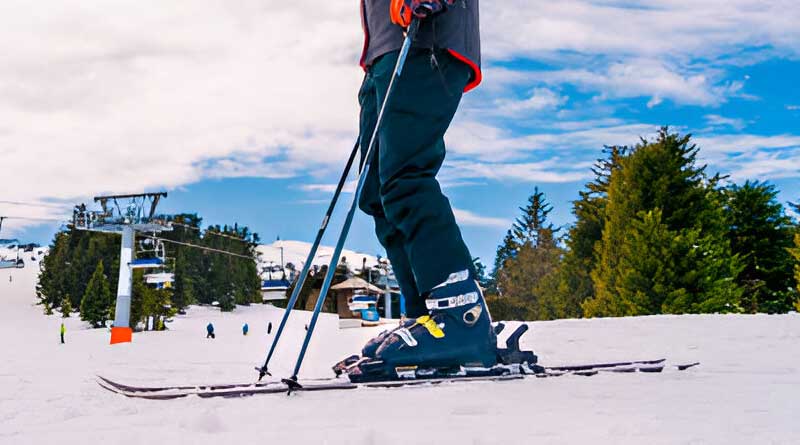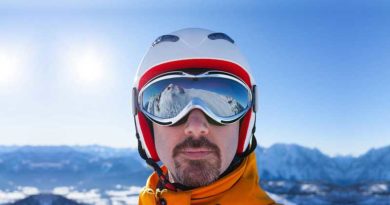Best Skis for Heavy Skiers of 2025
Finding the best skis for heavy skiers can make a big difference on the slopes. Heavier skiers need strong, stable skis. The right pair offers better control, balance, and speed. Without proper support, skis can feel shaky or sink too deep in snow. That can make skiing harder and less fun. Luckily, some skis are built for power and strength. They handle more weight and give a smooth, steady ride. Whether you’re a beginner or expert, the right skis matter. In this guide, we’ll show you top skis for heavier skiers. We’ve looked at build, stability, and performance. Let’s help you find the perfect match for your size and style.
1. Nordica Enforcer 94

-
Core: Energy 2 Ti Pulse Core (wood + elastomer between two sheets of Titanal)
-
Rocker Type: Rocker/Camber/Rocker (All-Mountain Rocker)
-
Turning Radius: Medium
-
Tail Type: Partial Twin Tip
The Nordica Enforcer 94 stands out as a top-tier all-mountain ski that blends raw power with surprising finesse. Its Energy 2 Ti Pulse Core sandwiches a responsive wood base and vibration-absorbing elastomer between dual layers of Titanal, delivering a ride that’s confident, smooth, and stable even when pushed hard. On groomed runs, the Enforcer 94 is a true performer, carving with precision and holding an edge effortlessly. It feels energetic yet never overbearing, making it a reliable choice for advanced skiers who demand both speed and control.
What makes this ski shine beyond the frontside is its versatility. Thanks to progressive shaping and a more playful tail, it easily transitions off-piste into trees or variable snow conditions without feeling too stiff or twitchy. The rocker-camber-rocker profile enhances float and turn initiation, while the medium turn radius offers balance between tight maneuverability and long, sweeping arcs. For skiers looking for one ski to handle almost anything on the mountain—from corduroy to crud—the Enforcer 94 is an ideal companion. It offers the confidence of a hard-charging ski with a forgiving edge that invites exploration.
Pros:
- Excellent edge hold on groomers
- Stable and damp at high speeds
- Nimble in trees and variable terrain
- Versatile for all-mountain use
Cons:
- A bit heavy for casual or beginner skiers
- Not as surfy or playful as softer flex skis
See the Nordica Enforcer 94 See the Women’s Santa Ana 92
2. Atomic Bent 100

-
Core: Light Woodcore (Poplar)
-
Rocker Type: All Mountain Rocker – 20% Tip Rocker / 65% Camber / 15% Tail Rocker
-
Construction: Dura Cap Sidewall and Resist Edges
-
Shape: HRZN 3D Bent Tip and Tail
The Atomic Bent 100 continues to shine as one of the most versatile and playful skis in the all-mountain category. Built with a poplar Light Woodcore, it offers a lively and energetic ride that doesn’t compromise on stability when the terrain gets rough. The updated HRZN 3D tip and tail design boosts float in softer snow and adds a fun, surfy feel to your turns, while the cambered midsection provides edge hold and control on hardpack. Whether you’re cruising groomers, seeking out side hits, or dipping into the trees, the Bent 100 adapts seamlessly, making it a favorite for skiers who blend freestyle into their all-mountain approach.
For those who occasionally visit the park or treat the entire mountain like a playground, the Bent 100 feels like a natural fit. It’s poppy and maneuverable, allowing quick edge-to-edge transitions and solid airtime off rollers and natural features. Despite its playful flex, it still holds a carve impressively well at moderate speeds. However, heavier or more aggressive skiers might find the longest available length (186 cm) a bit underwhelming in terms of stability. Still, for intermediate-to-advanced riders looking for a single ski to handle groomers, powder, and some park laps, the Bent 100 remains one of the most fun and balanced choices on the market.
Pros:
- Playful and energetic across varied terrain
- Excellent float and surfy feel in soft snow
- Durable edges and sidewalls for park hits
- Surprisingly solid edge hold for a soft-flex ski
Cons:
- Limited length options for taller or heavier skiers
- Not ideal for high-speed charging or icy terrain
3. Rossignol Experience 78 CA

-
Core: Poplar Wood Core with Drive Tip Solution and PEFC™ certification
-
Rocker Type: All Trail Profile (Rocker/Camber)
-
Turning Radius: Short
-
Construction: Cap Construction with 100% recycled steel edges and up to 30% recycled base material
The Rossignol Experience 78 CA is a confident, beginner-friendly ski that makes learning feel effortless and progression feel natural. Thanks to its lightweight poplar wood core and Drive Tip Solution, it balances playfulness with enough edge grip to inspire control and stability on groomed runs. The All Trail Rocker profile and sidecut allow for smooth turn initiation and soft absorption of terrain inconsistencies, which means skiers can carve with confidence even on slightly chopped-up snow. It’s built with durability and ease of use in mind, making it a solid option for those just getting into the sport or returning after time off.
Where the Experience 78 really shines is in its versatility and comfort. It’s responsive without being twitchy, stable at speed on blues, and forgiving enough to handle the slower pace of beginners. With eco-conscious materials like recycled steel edges and a base made from up to 30% recycled content, it also appeals to sustainability-minded buyers. Unlike many entry-level skis, this model won’t feel outdated too quickly. It holds up well for intermediate skiers who want to keep progressing without jumping straight to a stiffer or more aggressive design. While fast learners may eventually crave something more high-performance, the Experience 78 is an ideal starting point for most frontside riders.
Pros:
- Easy to control for beginners and intermediates
- Smooth turn initiation and great edge grip
- Eco-friendly materials used in construction
- Comes with quality Look Xpress 10 GW bindings
Cons:
- Lacks high-speed stability for advanced riders
- Not ideal for deep snow or off-piste skiing
See the Rossignol Experience 78 See the Women’s Experience 78
4. Völkl M7 Mantra

-
Core: Multilayer Woodcore (Beech and Poplar)
-
Rocker Type: Tip & Tail Rocker with camber underfoot
-
Construction: Tailored Titanal Frame & Tailored Carbon Tips
-
Turning Radius: 4 Radius Drive Sidecut (20m / 40m / 15m / 25m zones)
The Völkl M7 Mantra is a serious all-mountain machine built for confident, aggressive skiers who demand power, stability, and versatility. Its multilayer wood core combines beech and poplar for optimal stiffness underfoot and reduced swing weight at the tips and tails. Add to that Völkl’s Tailored Titanal Frame, which adjusts metal content based on ski length and rider ability, and you get a ski that feels custom-tuned to your strength and style. On hardpack or variable terrain, it’s a damp and composed ride, with the Tip & Tail Rocker making turn initiation smooth without sacrificing the ski’s strong edge hold.
What truly sets the M7 Mantra apart is its innovative 4 Radius Drive design, offering a unique blend of agility and stability. Quick to engage in tighter turns and responsive through the middle, the ski then powers out of turns with confidence thanks to a longer radius behind the bindings. Tailored Carbon Tips enhance front-end performance by targeting energy where it matters most. This ski thrives in all-mountain and big-mountain conditions—whether you’re railing groomers, blasting through chop, or ducking into steeps. While it’s not the most forgiving ride for relaxed skiers, intermediate-to-advanced riders looking for a dynamic, precision-engineered tool will find a lot to love in the M7 Mantra.
Pros:
- Precise and versatile 4-radius sidecut
- Strong edge grip and damp feel at speed
- Custom-tailored metal content for different skier profiles
- Excellent performance in both groomers and variable terrain
Cons:
- Demands good technique and strength to control
- Less forgiving for beginners or relaxed riders
See the Völkl M7 Mantra See the Women’s Secret 88
5. Salomon QST 106

-
Core: Full Poplar Woodcore
-
Laminates: Basalt & Fiberglass with Cork Damplifier
-
Rocker Type: Freeride Rocker – 25% Tip Rocker / Camber / 17% Tail Rocker
-
Base: Sintered Base for speed and durability
The Salomon QST 106 continues its legacy as a top-tier all-mountain and big mountain ski, now with thoughtful refinements that elevate its versatility. The full poplar wood core offers solid responsiveness and edge-to-edge stability, while the addition of basalt and fiberglass laminates enhances flex and torsional control. Cork Damplifier inserts in the tips and tails reduce chatter and absorb terrain vibrations, which is especially helpful when charging through variable snow or tracked-out bowls. With a Freeride Rocker profile that floats easily in powder and keeps enough camber underfoot for carving on firmer snow, the QST 106 thrives just as much in back bowls as it does on groomed resort laps.
Designed with off-piste adventure in mind, the QST 106 excels in softer snow, choppy conditions, and tight lines off the beaten path. Its wider waist and progressive shaping give it the lift needed for powder, while the new construction keeps things light and manageable without sacrificing high-speed performance. For intermediate to advanced riders who want a ski that prioritizes fun in mixed conditions but still holds its own on the groomers, the QST 106 is an ideal pick. It’s especially well-suited for heavier or more aggressive skiers who can drive the ski and take advantage of its energetic yet damp character.
Pros:
- Excellent float and stability in soft snow
- Great dampening and smooth ride in variable terrain
- Versatile shape for both inbounds and sidecountry skiing
- Strong edge grip with good responsiveness
Cons:
- Not as playful or surfy as lighter freestyle-focused skis
- May feel demanding for less experienced skiers
See the Salomon QST 106 See the Women’s QST Stella 106
6. Season Primer

-
Core: Poplar Wood Core
-
Sidecut: Dual-Progressive Sidecut
-
Shape: Full Twin Tip with Mild Taper
-
Turning Radius: Short
The Season Primer is a purpose-built all-mountain ski tailored for beginners to intermediates who want a responsive yet forgiving ride. The poplar wood core makes it feel lively underfoot, giving just the right amount of snap without being punishing. Its Dual-Progressive Sidecut is a standout feature—it helps you initiate turns easily at lower speeds while adapting well to higher speeds, offering both confidence and control as you progress. The full twin tip and short turning radius encourage playful riding, whether you’re carving on groomers, dabbling in the park, or venturing into softer snow.
Thanks to its moderate taper and narrow waist, the Primer transitions edge-to-edge quickly and holds stability throughout the arc of a turn. Its twin tip design also makes skiing switch approachable, which is great for those exploring freestyle terrain or just having fun across the mountain. While not built for high-speed charging or deep powder, it handles mixed conditions with surprising capability. For new skiers or progressing intermediates, this ski hits the sweet spot between ease-of-use and all-mountain potential, all while keeping a clean and timeless aesthetic from the minds of Austin Smith and Eric Pollard.
Pros:
- Very easy to turn and forgiving for new skiers
- Snappy feel with good energy and control
- Great for learning switch or park basics
- Excellent edge-to-edge quickness
Cons:
- Not ideal for high-speed or aggressive skiing
- Limited performance in deep powder conditions
7. Line Skis Pandora 85





